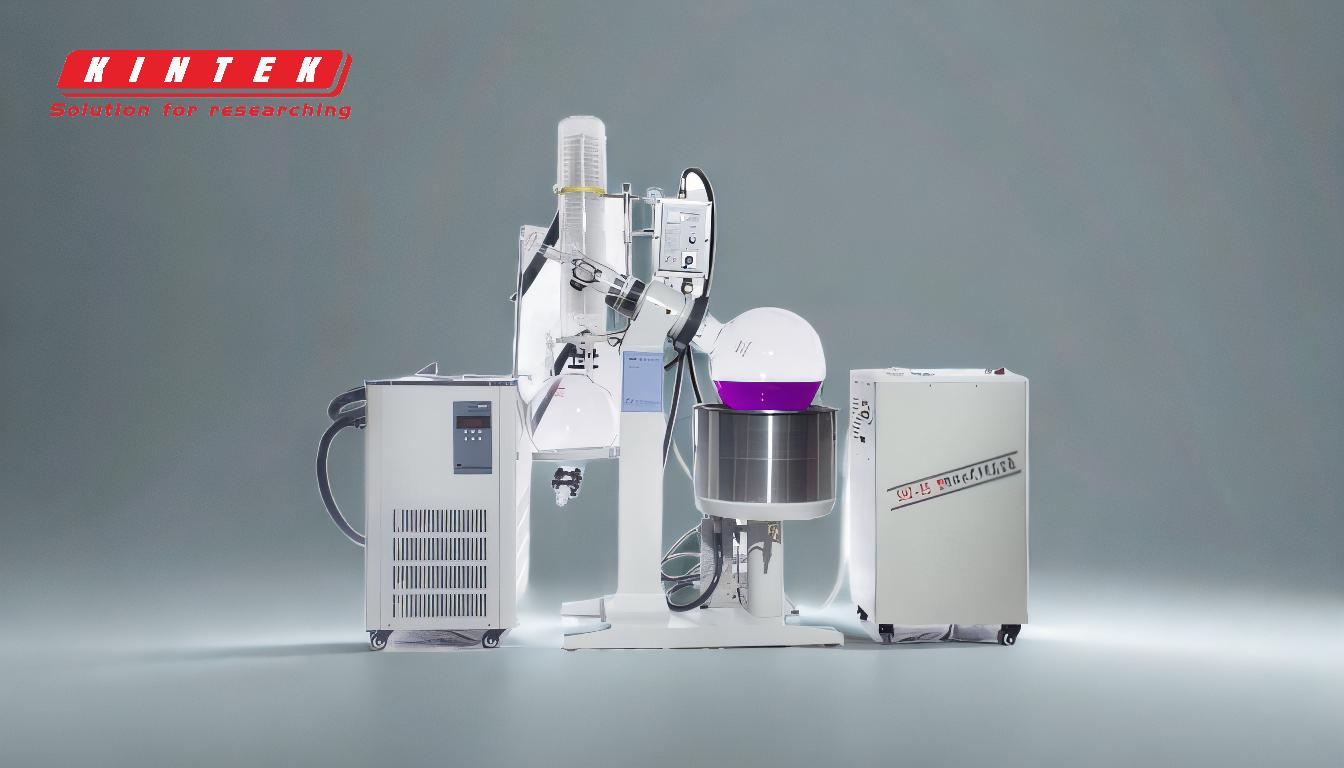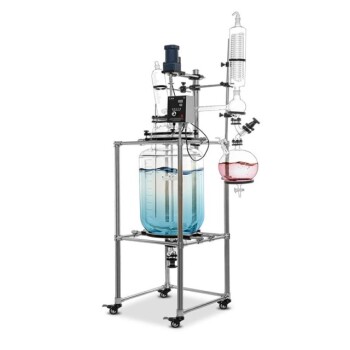The 20/40/60 rule for rotovap is a guideline to optimize the efficiency and performance of rotary evaporation systems. It emphasizes maintaining a temperature differential of 20°C between key components: the bath temperature, vapor temperature, and condenser temperature. This ensures proper condensation, prevents damage to the vacuum pump, and balances energy usage with evaporation output. By setting the chiller temperature to an optimal level rather than the lowest possible, the system achieves sufficient cooling capacity without compromising efficiency. This rule is particularly useful for maintaining consistent and effective distillation processes.
Key Points Explained:

-
Understanding the 20/40/60 Rule:
- The 20/40/60 rule is a temperature management principle for rotary evaporation systems.
- It ensures that the cooling system operates efficiently by maintaining a 20°C difference between the bath, vapor, and condenser temperatures.
-
Components of the Rule:
- Bath Temperature: The temperature of the heating bath that warms the solvent.
- Vapor Temperature: The temperature of the solvent vapor as it rises from the flask.
- Condenser Temperature: The temperature of the condenser, which cools the vapor back into liquid form.
-
Application of the Rule:
- If the bath temperature is set to 50°C, the vapor temperature should ideally be 30°C, and the condenser temperature should be 10°C.
- This 20°C difference ensures efficient condensation and prevents solvent loss.
-
Importance of the 20°C Differential:
- Proper Condensation: A 20°C difference ensures that the vapor condenses effectively, preventing it from escaping into the vacuum pump.
- Energy Efficiency: Maintaining this differential avoids excessive cooling, which can reduce system efficiency and increase energy consumption.
- System Protection: Prevents damage to the vacuum pump by ensuring that only condensed liquid, not vapor, reaches it.
-
Chiller Temperature Optimization:
- The rule suggests setting the chiller temperature to an optimal level rather than the lowest possible.
- This ensures sufficient cooling capacity without overloading the system or wasting energy.
-
Practical Example:
- For a bath temperature of 60°C, the vapor temperature should be 40°C, and the condenser temperature should be 20°C.
- This setup ensures that the solvent evaporates and condenses efficiently, maintaining a smooth distillation process.
-
Benefits of Following the Rule:
- Consistent Performance: Ensures stable and reliable operation of the rotary evaporator.
- Enhanced Efficiency: Balances evaporation output with energy usage, optimizing the distillation process.
- Longevity of Equipment: Protects the vacuum pump and other components from damage caused by improper condensation.
By adhering to the 20/40/60 rule, users can achieve optimal performance from their rotary evaporation systems, ensuring efficient and effective distillation processes while protecting the equipment from potential damage.
Summary Table:
| Component | Temperature | Role |
|---|---|---|
| Bath Temperature | 50°C | Heats the solvent to initiate evaporation. |
| Vapor Temperature | 30°C | Temperature of the solvent vapor rising from the flask. |
| Condenser Temperature | 10°C | Cools the vapor back into liquid form, ensuring efficient condensation. |
| Chiller Temperature | Optimal (not lowest) | Balances cooling capacity and energy efficiency. |
Maximize your rotary evaporation efficiency—contact our experts today for tailored advice!























